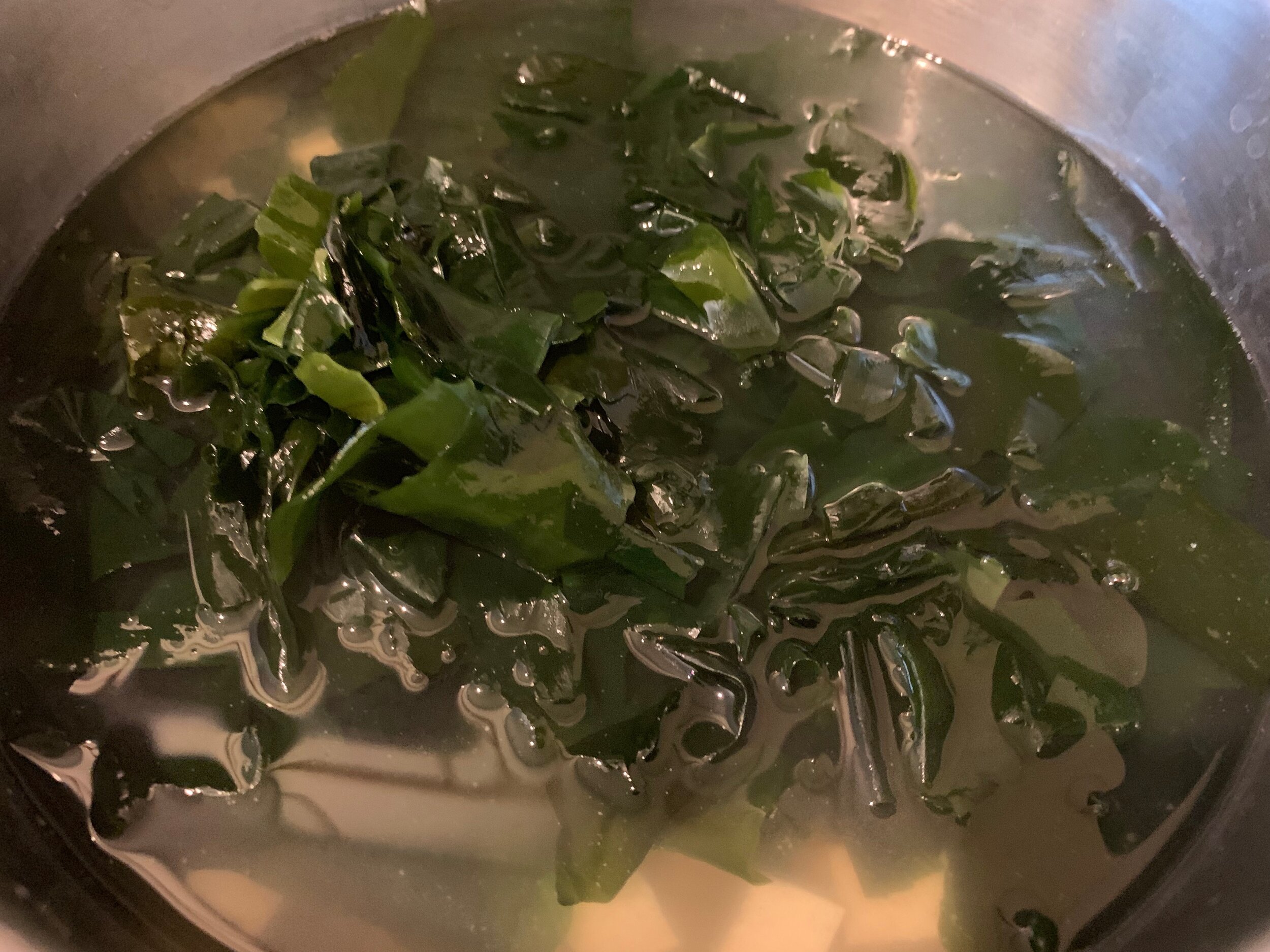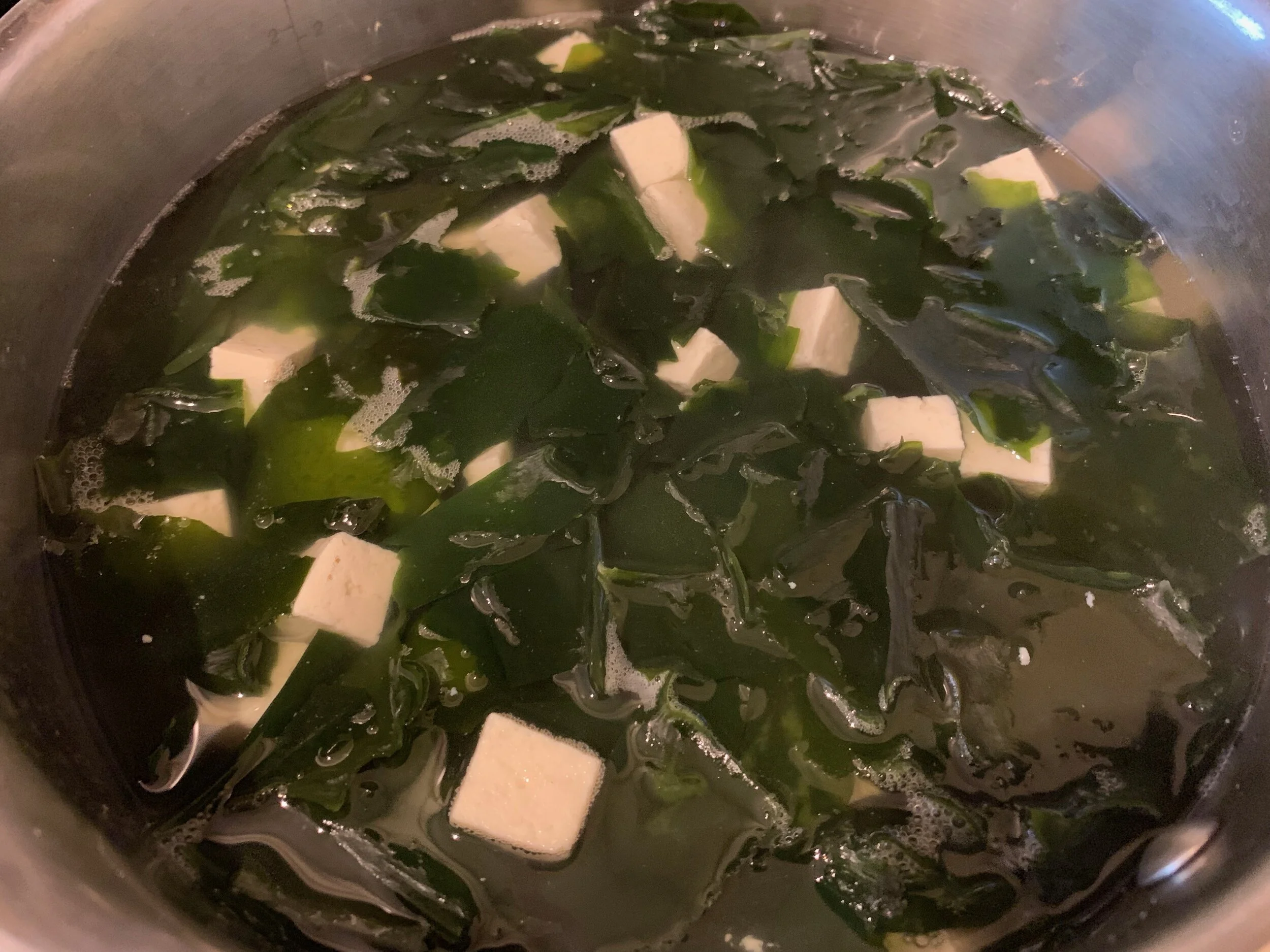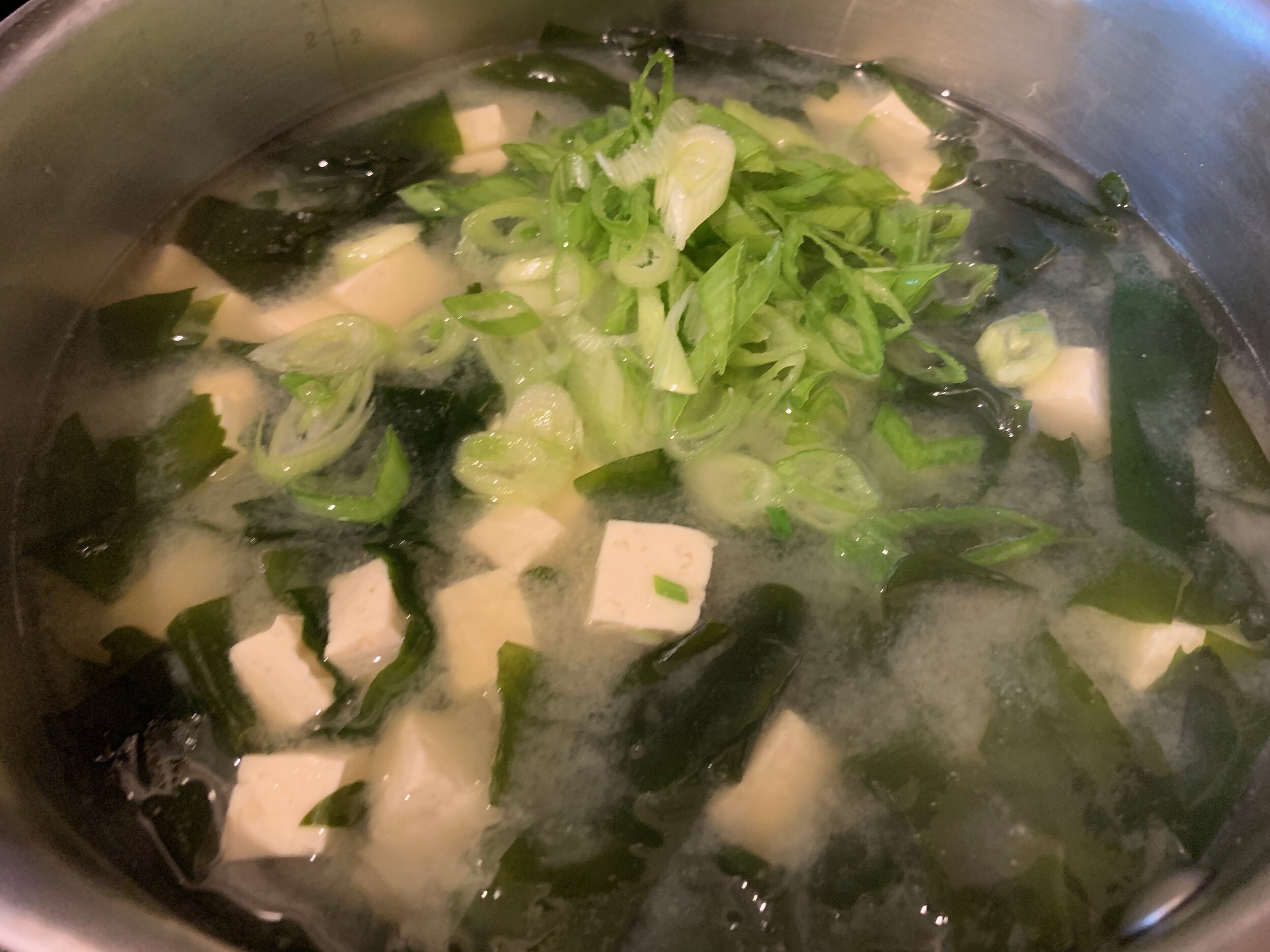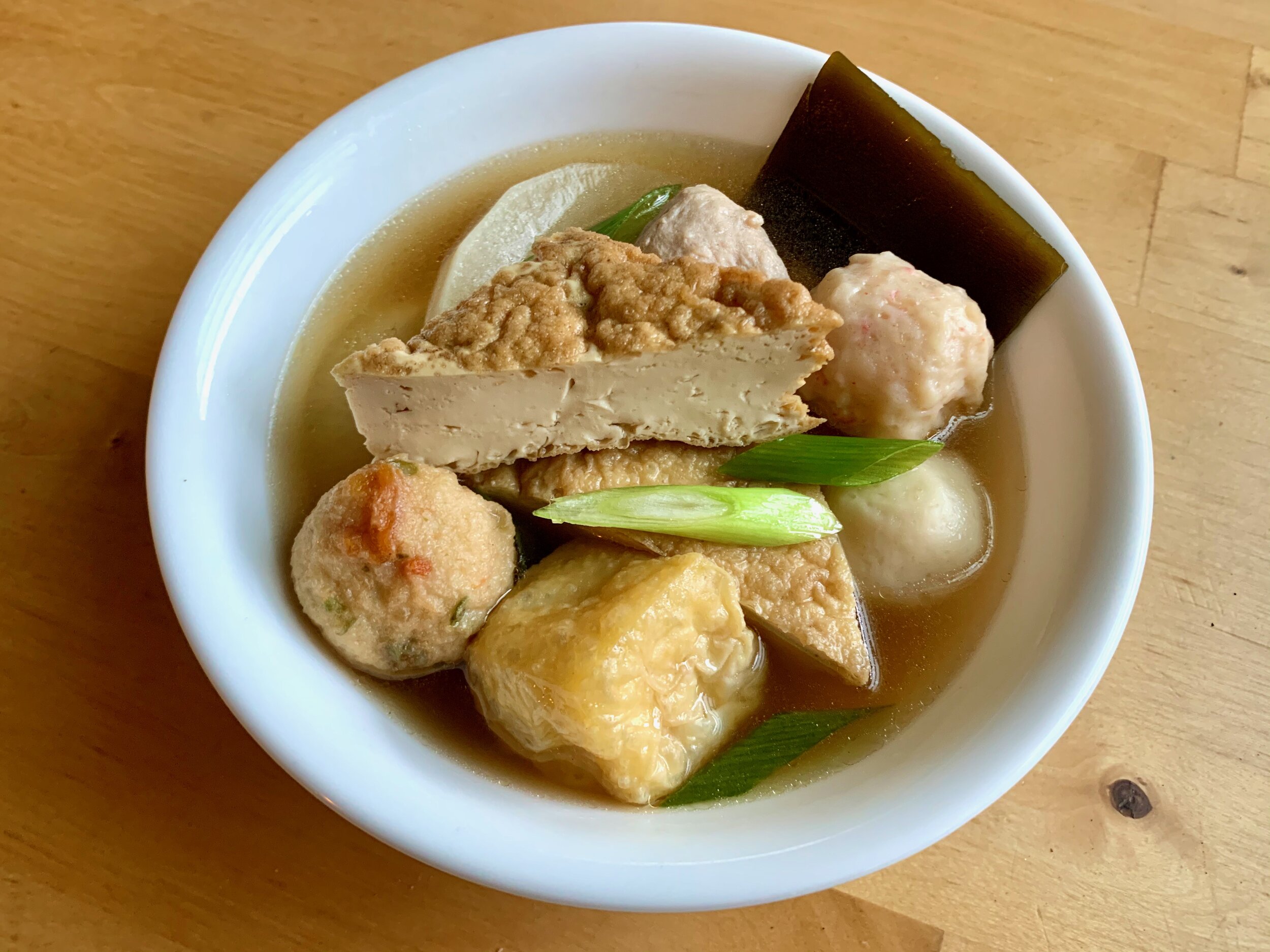Miso Soup

味噌汁 (Miso Shiru)
Miso soup is a traditional and ubiquitous Japanese soup, found on tables across Japan and around the world. Three out of four Japanese people have miso soup at least once a day, and it is often served as a side soup for both lunch and dinner. Its popularity is no surprise—it has few ingredients, is quick to make, and is packed with flavor.
The star of the show is in the name—miso paste. Made by fermenting soybeans with salt and kōji [1], miso has been produced in Japan since ancient times. Miso was an important source of protein for much of Japan’s history, as the meat of land animals was rarely consumed in the country prior to the Meiji Restoration. It was cheap to produce, shelf stable, and contained many necessary vitamins and minerals. This made miso a strategic resource during the violent upheavals of the Sengoku period. [2]
Today, there exist as many types of miso as there are types of cheese, their distinct flavors a result of different fermentation processes and ingredients—and they all work in soup!
Ingredients
4 cups dashi
1/3 cup wakame seaweed
3 tbsp miso
8 oz tofu, cubed
2 scallions, chopped
Salt to taste
Miso soup is built on dashi (だし), a Japanese soup stock made from kombu kelp and dried bonito flakes. It is these bonito flakes, shavings of dried, fermented, and smoked tuna, which render authentic miso soup not quite vegetarian [3] (To make the soup fully vegetarian, see some options in the “Substitutions” section below). Homemade dashi is best for miso soup, as a good stock can really shine in a recipe with so few other ingredients. In a pinch, however, you can use dashi granules to make instant dashi stock.
The other key ingredient is, of course, miso. While you will have to try individual kinds of miso to find your favorite, the miso you will find in an average Asian supermarket can be broadly classed into 4 types. Shiro miso, or white miso, is the mildest class of miso, with a relatively light and sweet flavor. Shinshu miso, or yellow miso, has been fermented longer than white miso, and is a versatile miso which can be used in many applications. Aka miso, or red miso, is darker in color, saltier, and has a more pungent flavor. [4] Finally, you will see awase miso, or mixed miso. These miso are produced by combining two or more other types of miso, creating a new set of flavors. There is a great degree of variability in awase miso flavors, but on average they are most similar to shinshu miso.
All of these types of miso work in miso soup, so you should find a particular miso that you enjoy in soup form. Also, you may choose to use different miso depending on the other ingredients you are planning to put into your soup, with stronger miso pairing better with more flavorful ingredients, such as mushrooms. If you only want one type of miso, though, go for a shinshu miso or awase miso.
The recipe we are preparing today limits the other ingredients we are putting into the soup to the classic pairing of tofu and wakame seaweed. [5] However, many vegetables work well in miso soup, and seafood sometimes can make an appearance as well. Wakame seaweed is almost always sold dried, so before we start cooking we will have to rehydrate it. Soak the wakame in warm water for 15 minutes. The seaweed should bloom in the water, greatly expanding in volume. After 15 minutes, drain and set the wakame aside.
Bring 4 cups of dashi to a simmer (1 cup per serving). Then add the cubed tofu and wakame to the pot and continue to simmer for 1 minute, until the tofu is warmed through. We want to minimize the time we are cooking the miso, so we won’t add it until after our other ingredients are ready for service. Why? Like a good cheese or extra virgin olive oil, a good miso contains many complex flavors which break down quickly when heated. We therefore want to mix the miso as late as possible, to preserve these flavor compounds. Add 3 tablespoons of miso to the pot (less if you’re using aka miso), and mix well until the miso is completely dissolved. We want to make sure there are no blobs of miso floating about, so mix thoroughly for about a minute. If you find yourself having trouble with this step, try adding the miso to a ladle, adding about equal parts hot dashi to the ladle, and then mixing that with chopsticks until smooth before adding that ladle into the main soup pot.
Add the chopped scallions, salt to taste (remember that miso is quite salty), and serve the soup immediately.
Substitutions
Miso soup is a flexible dish, with many variations. Some ingredients commonly found in variants of the soup include daikon radish, kabocha squash, mushrooms, bean sprouts, clams, or salmon.
If you want to make a vegetarian version, substitute the dashi with kombu dashi or a vegetable stock.
[1] Kōji (Aspergillus oryzae) is the mold used to ferment miso. It is also used to ferment pretty much every other fermented Japanese food—soy sauce, sake, shochu, rice vinegar, and amazake. It is so critical that the Brewing Society of Japan declared it a “national fungus.” Outside of food, Aspergillus oryzae is also used in the medical industry to produce the enzyme lactase.
[2] The Sengoku period (1467-1615), or the “Age of Warring States,” was a nearly 150-year period of near-constant civil war in Japan.
[3] To make bonito flakes, or katsuobushi, the fish are sun-dried, inoculated with the mold (Aspergillus glaucus) to aid fermentation, and then smoked. The intense umami flavor of bonito flakes comes from the high concentration of inosinic acid developed during the fermentation process.
[4] In some parts of Japan, they prefer an aka miso fermented for over a year, to the point that it appears dark brown in color.
[5] Wakame (Undaria pinnatifida) has been cultivated by Japanese sea farmers since the 8th century. Wakame is native to the coastal seas of Japan, Korea, and China, but increased maritime trade has led to the spread of Wakame to temperate waters around the world. Its aggressive growth has earned it a place on the IUCN’s list of 100 worst invasive species.
Recipe
Prep Time: 5 min Cook Time: 5 min Total Time: 20 min
(+10 min inactive)
Difficulty: 1/5
Heat Sources: 1 burner
Equipment: pot
Servings: 4
Ingredients
4 cups dashi
1/3 cup wakame seaweed
3 tbsp miso
8 oz tofu, cubed
2 scallions, chopped
Salt to taste
Instructions
1. Soak the wakame seaweed in warm water for 15 minutes to rehydrate it. Drain and set aside.
2. In a pot, bring the dashi to a simmer. Add the wakame and cubed tofu to the pot, and simmer for 1 minute, until tofu is warmed through.
3. Add the miso to the pot, and mix well for about 1 minute, until the miso is completely dissolved.
4. Add the chopped scallions, season to taste, and serve immediately.














